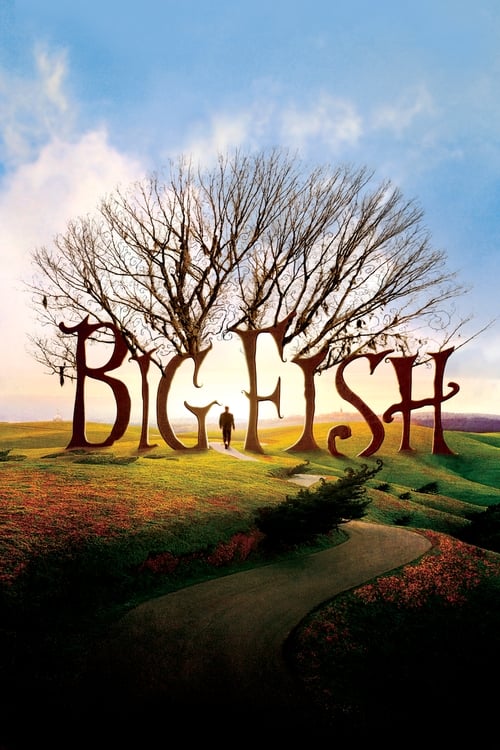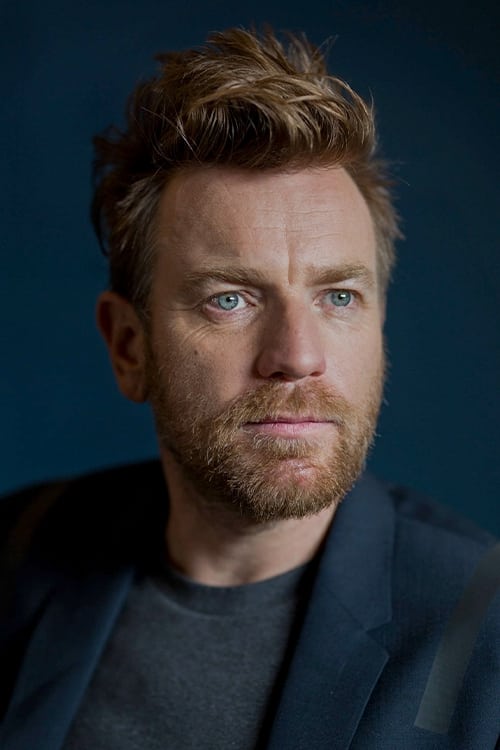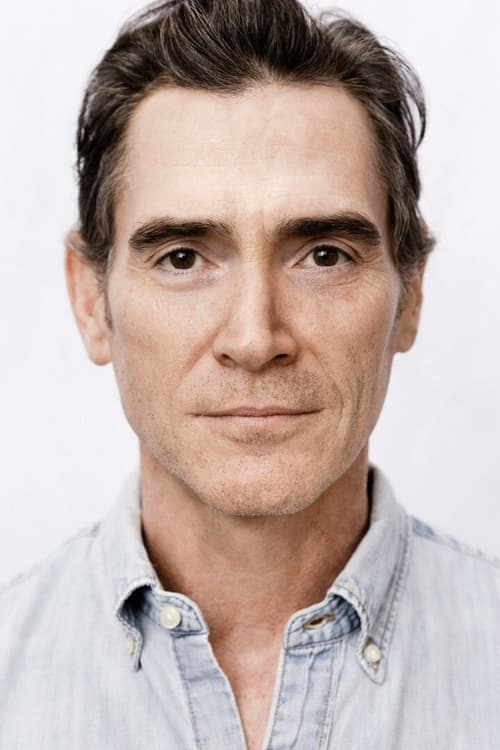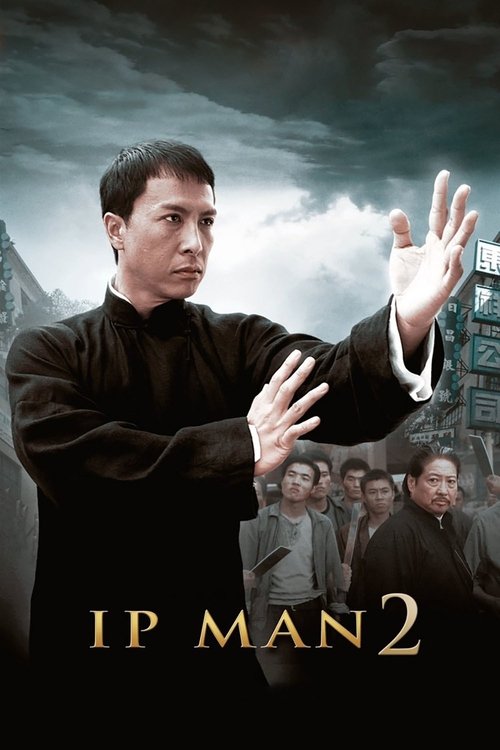
Big Fish
Throughout his life Edward Bloom has always been a man of big appetites, enormous passions and tall tales. In his later years, he remains a huge mystery to his son, William. Now, to get to know the real man, Will begins piecing together a true picture of his father from flashbacks of his amazing adventures.
Dialogues from Movie Big Fish
Quotes from Movie Big Fish
Sound Tracks from Big Fish by Danny Elfman
Man of the Hour
Man of the Hour by Pearl Jam, Played during the emotional climax of the film
Sweet Dreams (Are Made of This)
Sweet Dreams (Are Made of This) by Eurythmics, Used in a scene depicting Edward Bloom's storytelling
Daisy's Song
Daisy's Song by Ewan McGregor, Performed by Edward during the scene at the river
Mississippi Kite
Mississippi Kite by Nick Cave and the Bad Seeds, Accompanies a montage about Edward's life
Download App
Memorable Scenes from Movie Big Fish
The Death of Edward Bloom
Edward Bloom, on his deathbed, tells his son Will stories from his life, filled with magic and wonder. This moment is bittersweet; Will initially struggles to accept his father's tall tales as reality. As Edward shares his final moments, he asks Will to tell his story one last time, revealing the vulnerability behind the larger-than-life persona he created. The visuals capture the warmth of their relationship, illuminated by soft lighting, while Edward's frail state contrasts sharply with the vivid images of his past adventures.
Context: At this point in the movie, Will has been trying to differentiate between truth and fiction in his father's stories. Edward's impending death forces a reckoning between the two.
Meeting of the Giant
As Edward recounts his encounter with a giant named Karl, the storytelling captures the awe and imagination of Edward's youth. The scene shines with whimsy; the giant’s kindness creates a beautiful friendship. The moment peaks when Karl helps Edward during a desperate time. The visuals show breathtaking landscapes, emphasizing the magic in the mundane, while Edward's joyful spirit contrasts with the seriousness of adult life.
Context: This encounter happens when Edward Bloom is a young man. It symbolizes his larger-than-life dreams and his charisma in making friends out of unusual characters.
The River
Edward takes a leap into an enchanted river, transforming into a magical version of himself. This moment signifies the transition from an ordinary life to one full of adventure and mystery. The stunning cinematography captures the changing hues of the water around him and Edward's expression of pure exhilaration. It's a pivotal visual spectacle that represents possibility and escaping reality.
Context: Leading up to this moment, Edward has faced various struggles. This leap embodies his desire to break free from societal constraints and embrace his fantastical dreams.
Will's Confrontation with His Father
In a pivotal moment of conflict, Will confronts his father, accusing him of being a liar. The tension culminates when Edward, hurt yet resilient, defends his life stories as a reflection of his truths. They stand amidst family chaos, highlighting the stark difference in their perspectives. Their argument reveals deeper emotions of love, misunderstanding, and desperation. It’s a raw and vulnerable exchange that leaves Will re-evaluating his father's life.
Context: This scene is crucial as it represents the climax of Will's internal struggle to understand Edward and the legacy of stories he's inherited.
The Wedding of Edward and Sandra
Edward and Sandra's whimsical wedding showcases the enchantment of their love story. The scene is filled with charming details, from an unexpected ceremony in a field to joyful dancing. The highlight occurs when they share vows filled with poetic beauty and sincerity, each word becoming a symbol of their unbreakable bond. The imagery is ethereal, filled with a sense of hope. It encapsulates the idea that love is the greatest adventure.
Context: This wedding is a significant moment in Edward's life, solidifying his belief in magic and romance. It's a key moment reflecting the optimistic tone of the film.
The Circus Encounter
Edward stumbles upon a magical circus run by the enigmatic ringmaster, who brings his dreams to life. The atmosphere is vibrant; bright colors and lively music fill the air. The peak moment comes when Edward showcases his talent, defying expectations. The whimsical nature of the circus mirrors Edward's adventurous spirit, capturing the acceptance of one's dreams regardless of how far-fetched they seem.
Context: This scene showcases how Edward is drawn to fantastical elements in his life and represents his longing for something beyond the conventional.
The Wishing Well
Edward’s visit to a wishing well symbolizes hope and longing. He drops a coin and makes a wish, reflecting on his desires and lost chances. The moment heightens when viewers see flashes of his past, revealing dreams that deeply resonate with his character. The dreamlike quality enhances the emotional weight, as viewers feel Edward’s wishes intertwine with the rich tapestry of his life.
Context: This scene comes after many fantastical adventures. It roots Edward's extraordinary life in the common human experience of dreaming and wishing.
The Story of the Lion
When Edward saves a lion from captivity, it becomes a powerful metaphor for bravery. The visuals capture the tension of the rescue, and the moment peaks when the lion roars in freedom, symbolizing courage and liberation. Edward's fearless acts resonate with viewers, transcending mere storytelling to become an expression of his character's essence.
Context: This story highlights Edward’s brave heart and selflessness, reinforcing the themes of adventure and sacrifice that permeate the film.
The Visit to the End of the World
Edward's journey to the 'end of the world' is a breathtaking visual adventure. The actual moment arrives when he stands on a cliff overlooking a breathtaking view, flowing with the beauty of nature. The dialogue here captures a realization about life—it’s not about the destination, but the journey itself. This scene reinforces the idea of cherishing experiences and appreciating beauty in every moment.
Context: This journey symbolizes Edward reaching towards his dreams, merging reality with the fantastical, and uncovering profound truths about life.
The Reunion at the Grave
After Edward's passing, Will returns to his father's grave to reflect on their complicated relationship. As he speaks, memories flood back, leading to a moment of revelation where he begins to see the beauty in Edward's tales. The visuals are poignant, filled with emotional weight. It’s a cathartic moment for Will, as he realizes that storytelling was Edward's way of connecting and loving him.
Context: This scene is essential for Will's character arc, as it marks his acceptance of his father's legacy and the magic in their relationship.
The Story of the Unseen Woman
Edward shares a heartfelt story about a mysterious woman, bringing forth a poignant moment that highlights his vulnerability. He describes her beauty and charm, and the tension peaks when he laments how true beauty often lies unseen. This moment is presented with soft music and intimate close-ups, making it deeply resonant with themes of love and loss.
Context: This story recaps Edward's romantic adventures, but it reveals how he always yearned for authentic connection beneath the glamour.
The Final Fish Story
In the film's climax, Will finally accepts Edward's story as truth. The magic of his father's life unfolds before him in his final moments. As Edward speaks of his greatest adventure, the visuals intertwine fantasy and reality, creating a breathtaking montage of his life choices. The culmination leads to a moment of epiphany, allowing Will to embrace the fantastical elements of Edward's tales.
Context: This scene serves as the emotional resolution to Will's internal struggle, encapsulating the film's themes of acceptance, storytelling, and love.
The Dance with Sandra
Edward and Sandra share a slow dance under a canopy of stars, a moment filled with quiet intimacy. The scene highlights vulnerability; through the mundane act of dancing, their connection solidifies as they express their love in subtle gestures. The visuals, enveloped in soft light, enhance the romance and purity of the moment.
Context: Earlier in the film, Edward's courting of Sandra is portrayed with whimsy. This dance signifies the depth of their relationship, showing the power of love over time.
The Gift of Stories
As Edward tells Will about the tales of his life, he shares his belief that stories hold the power of legacy. The moment is emotionally charged as they sit together, reflecting on their past experiences. The peak of this moment is when Edward emphasizes the importance of storytelling in keeping memories alive, a revelation that resonates with audiences. The visuals fade from their present living room to vibrant reenactments of the stories.
Context: This moment serves as a catalyst for Will, as he grapples with understanding his father's life and what to carry forward.
A Wish Remembered
Reminiscing over a childhood wish, Will feels the weight of how far removed he felt from his father. The pivotal moment arises when he finds a forgotten letter that once held his hopes. The visuals evoke nostalgia, capturing the essence of longing. It’s a deeply personal moment for Will as he confronts buried emotions regarding Edward's storytelling.
Context: This scene reflects Will's internal conflict and sets him on the path to understanding his father's heart through the lens of memory.
The Meaning of Home
Edward shares a heartfelt moment about his definition of home; it’s less about a place, but rather the people and stories that make it special. The realization comes as he holds Sandra’s hand, leading to visceral flashbacks that illustrate their lives together. The visuals imbue warmth, creating a deeper understanding of home’s emotional weight.
Context: This reflection comes at a time when Edward grapples with mortality, making his notions of home ever more poignant and impactful.
The Storm
A storm rages outside as Edward speaks of survival and bravery during harrowing moments in his life. The moment peaks with his memories intersecting reality, where flickers of lighting synchronize with his storytelling, effectively creating an electric atmosphere. This scene underlines the themes of resilience, as viewers are caught between fear and hope.
Context: This moments synthesizes Edward's adventurous nature, illustrating how he faced the storms of life with courage, reinforcing the adventurous spirit of the film.
The Vision of the Future
As Edward discusses his future plans, dreams and aspirations materialize in creative visuals. The peak of this moment comes when he envisions multiple paths his life could take; the imaginative visuals pop with color and wonder. This moment deepens the audience’s awareness of his hopeful stance toward the unknown future.
Context: Leading up to this moment, Edward reflects on the importance of dreams, weaving the theme of possibility throughout the narrative.
Edward's Farewell
In his emotional farewell, Edward's words resonate with lasting wisdom on life and legacy. The moment peaks when he tells Will, 'The best way to tell a story is to live it.' The solemnity of this moment is heightened by the heartfelt goodbye as Will finally understands the meaning behind his father’s tales. The visuals blend reality with the fantastical, echoing Edward’s life journey.
Context: This farewell ultimately leads to Will's acceptance of his father's narrative, solidifying the emotional core of the entire film.
Will and Edward's Garden
In a quiet garden moment, Will and Edward reflect on life and connections. The visuals are serene, focusing on the flowers and vibrant colors surrounding them. The scene reaches emotional heights as they realize that life is about creating beauty, leading to heartfelt conversations about the passage of time. The garden symbolizes growth, transformation, and the beauty in fleeting moments.
Context: This scene serves as a setting for closure, encapsulating their bond and paving the way for Will to accept his father’s storytelling legacy.
The Arrival of the End
The film culminates with Edward’s last moments, intertwined with flashbacks of his life. The imagery transitions seamlessly between his fantastic adventures and the emotional weight of goodbyes. The peak arrives as Edward peacefully embraces Will with the truth about their bond. This moment transforms his story into an emotional farewell that leaves viewers contemplating their own lives.
Context: This scene is crucial in tying up all the narrative threads and showcasing the significance of Edward’s life lived through stories.
The Beginning of a Legacy
In a beautiful culmination, Will begins to share his father’s stories, preserving Edward’s essence through storytelling. The moment peaks when he confidently recounts Edward's tales, creating a strong connection to his father’s legacy. The visuals embrace warmth and love, emphasizing the importance of sharing stories to keep memories alive. Will’s transformation signifies hope as he steps boldly into the world.
Context: This moment highlights Will’s change of heart, showcasing acceptance and growth as he embraces storytelling as a bridge to his father's legacy.
Download App







